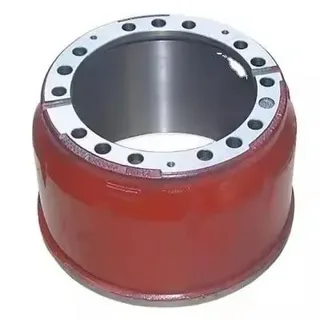When it comes to quality and safety, a brake drum manufacturer’s material selection and process control play a vital role. High-carbon steel and carefully formulated cast alloys are subjected to strict quality criteria at every step, from heat treatment to CNC machining centers. Chemical composition spectrometer measurements, mechanical strength tests and dynamic stability checks ensure that every drum that comes to market delivers vibration-free, quiet and consistent braking performance. This improves driver comfort and maximizes road safety. It must be emphasized that the choice of brake drum manufacturer is very important.
How are Brake Drums Produced?
Brake drum production starts with the melting of high-strength steel or special casting alloy raw material. The melted metal is poured into casting molds and subjected to a controlled cooling process to obtain its rough form. After the cooled drum is treated in heat treatment furnaces for stress relief and strengthening, the excesses on the inner and outer surfaces are removed on CNC machines and brought to the desired tolerances. The machined part is subjected to a rotation test in dynamic balance devices to check the balance success and corrective actions are applied when necessary. In the final step, cleaning, surface protection coating and quality control tests are completed and the drums are delivered to the market ready to offer silent, vibration-free and reliable braking performance.
Brake Drum Models
1. One-Piece Cast Drum
The most common body type; it is manufactured from one-piece steel or cast alloy and offers the advantage of simple production and economic cost.
2. Vented Drum
It contains channels inside that quickly dissipate heat; prevents performance degradation and deformation by minimizing heating in intense braking.
3. Light Alloy Drum
Weight is reduced by using an aluminum or lightweight composite reinforced body; especially ideal for vehicles looking to improve fuel efficiency and suspension response.
4. High Performance Drum
Special high speed steels, increased surface roughness control and tight balance tolerances ensure consistent and powerful braking power for track or sporting use.
5. Heavy-Duty Drum
Manufactured with extra thick-walled and increased strength material suitable for high load carrying vehicles such as trucks, buses and construction equipment; long-term durability is at the forefront.
6. OEM Replacement Drum
It is the standard model that aims to maintain the original performance in individual repairs and periodic maintenance, in full compliance with the original technical specifications of the vehicle manufacturer.
Since each model is designed by considering different weight, heat dissipation and cost balance; it is important to choose the most suitable drum according to your vehicle type, driving style and maintenance period criteria in terms of both safety and economy.
How is Brake Drum Maintenance Performed?
Brake drum maintenance should be done regularly for safe and quiet braking. First of all, after the parking brake is released and the wheel nuts are loosened, the vehicle is lifted with a suitable jack and the wheel is removed. After the drum is dismantled, dust, dirt and oil residues on the inner surface are cleaned with compressed air or soft brush; wear marks, deep scratches or cracks are carefully checked. If the tolerance limits are not exceeded by measuring the inner diameter, if necessary, the drum is thinned on a grinding machine to ensure the correct surface profile and run-out value. The points where the pads come into contact with the shoe are lubricated with light high-temperature grease, but no grease should get on the friction surface of the brake pads.
Finally, the drum is replaced, the nuts are tightened according to the torque values and the pad-to-drum distance is adjusted with the brake adjustment screw and the correctness of the maintenance is checked with a short test drive. Thus, both brake performance is maintained and drum life is prolonged.

